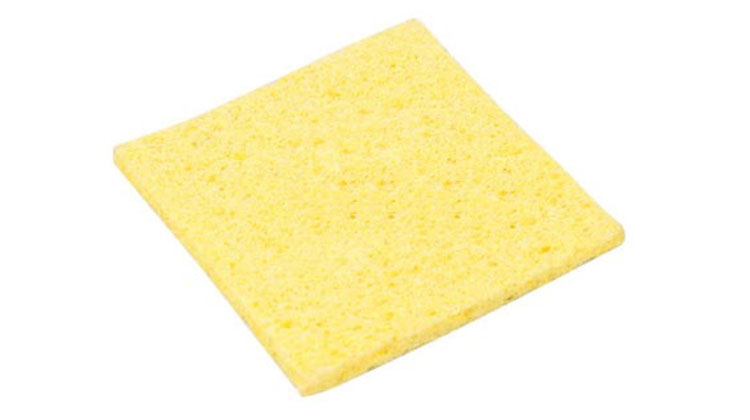When soldering, it is important to use the right tools and techniques to ensure that the soldering process is successful and produces high-quality results. One of the tools that is commonly used in soldering is a sponge, which is used to clean the soldering iron and remove excess solder from the workpiece.

The question of whether or not to wet the sponge when soldering is common, and the answer depends on several factors. In general, wetting the sponge can be beneficial in some situations, but it can also be detrimental in others. In this article, we will explore the pros and cons of wetting the sponge when soldering and provide some tips for deciding whether or not to do so.
One of the main benefits of wetting the sponge when soldering is that it can help to clean the soldering iron more effectively. When the sponge is wet, it can absorb more excess solder and other contaminants from the soldering iron, which can help keep the iron clean and free of obstructions. This is especially important when working with lead-free solder, which tends to create more residue on the soldering iron than leaded solder.
Additionally, wetting the sponge can also help to prevent the buildup of static electricity on the soldering iron. When the sponge is dry, it can generate static electricity as it rubs against the soldering iron, which can cause the iron to become charged and attract debris. By wetting the sponge, you can reduce the amount of static electricity generated and prevent the iron from becoming clogged with debris.
However, there are also some drawbacks to wetting the sponge when soldering. For one, wetting the sponge can cause it to deteriorate more quickly, which means that you will need to replace it more often. This can be a problem if you work on a large soldering project, as you may need several sponges to complete the job. Additionally, wetting the sponge can also create a mess in your workspace, which can be a nuisance if you are working in a small area.
In addition, wetting the sponge can also affect the performance of the soldering iron. When the sponge is wet, it can transfer moisture to the soldering iron, which can cause the iron to rust or corrode over time. This can be a problem if you use a high-quality soldering iron, as you may need to replace it more often if it becomes damaged by moisture.
Overall, whether or not to wet the sponge when soldering is a decision that depends on many factors. Wetting the sponge may be the best option if you are working with lead-free solder or are concerned about static electricity or debris buildup on the soldering iron. However, if you are working on a large soldering project or using a high-quality soldering iron, it may be best to avoid wetting the sponge to prevent damage to the iron.
In conclusion, wetting the sponge when soldering can be beneficial in some situations but also detrimental in others. By considering the pros and cons of wetting the sponge, the type of soldering project you are working on, and the quality of your soldering iron, you can make an informed decision about whether or not to wet the sponge when soldering.
As with any soldering technique, it is important to practice good safety habits when using a wet sponge. If you decide to wet the sponge when soldering, be sure to use only a small amount of water, and avoid over-wetting the sponge. This will help prevent excess moisture formation, which can be dangerous when working with high temperatures and potentially flammable materials.
Additionally, be sure to use a sponge specifically designed for soldering applications. There are many different types of sponges available, and not all are suitable for soldering. A good soldering sponge should be made of a durable material that can withstand high temperatures and frequent use and should be able to absorb a significant amount of moisture without deteriorating.
When using a wet sponge, it is also important to clean the soldering iron regularly. This will help remove any excess moisture that may have accumulated on the iron and prevent the formation of rust or other types of corrosion. To clean the soldering iron, swipe it across the wet sponge a few times, making sure to cover the entire surface of the iron. Then, use a dry cloth or sponge to remove any remaining moisture, and store the iron in a dry location.
In summary, whether or not to wet the sponge when soldering is a decision that depends on the specific circumstances of your soldering project. Wetting the sponge may be the best option if you are working with lead-free solder or are concerned about static electricity or debris buildup on the soldering iron. However, if you are working on a large soldering project or using a high-quality soldering iron, it may be best to avoid wetting the sponge to prevent damage to the iron. In any case, follow proper safety guidelines, and use a good quality sponge specifically designed for soldering applications.
Contact: Mr. Li
Phone: (0086) 138 24254 321
E-mail: atetool@atetool.com.cn
Add: 5F, 1-2# Building, Tongfuyu Industrial Zone, Aiqun Rd, Shiyan Subdistrict, Bao'an, Shenzhen, 518108, China